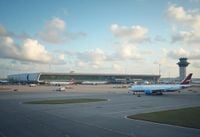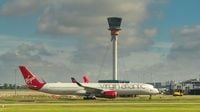London Heathrow Airport has unveiled an ambitious £10 billion investment plan aimed at transforming the airport into a more efficient, sustainable, and passenger-friendly hub by 2031. The plan, announced on July 12, 2025, promises to boost capacity by 12%, enabling the airport to serve an additional 10 million passengers annually while enhancing operational reliability and customer experience.
At the heart of this five-year plan, which spans from 2027 to 2031, is a customer-led approach developed after extensive consultations with airline partners and over two million passengers. Heathrow Airport Limited (HAL) has committed to privately financing the entire project, with a £2 billion equity injection from shareholders and efficiency savings exceeding £800 million, ensuring the investment remains affordable without relying on taxpayer money.
The expansion will see new terminal spaces equivalent to the size of ten football pitches unlocked within existing facilities, introducing new lounges, shops, and restaurants designed to make journeys smoother and more enjoyable. This marks the most significant transformation at Heathrow in over a decade, aiming for operational targets such as 99% of bags traveling with passengers on the correct flight, 80% of flights departing on time, and 95% of passengers waiting less than five minutes at security checkpoints.
Heathrow's CEO, Thomas Woldbye, emphasized the necessity of this investment to maintain and enhance the airport's competitiveness on the global stage. "To compete with global hubs, we must invest," he said. Woldbye highlighted Heathrow's current status as Europe's most punctual major airport and expressed the airport’s ambition to climb further in international rankings by delivering a more resilient and efficient travel experience.
In addition to passenger capacity expansion, the plan includes a 20% increase in freight handling capacity, providing UK businesses with improved access to international markets. The redevelopment will also involve major infrastructural changes, including demolishing the decommissioned Terminal 1, extending Terminal 2, and constructing a new southern road tunnel to improve access and traffic flow around the airport.
Sustainability is a core component of the investment. Heathrow aims to reduce its carbon footprint by removing 3 million tonnes of carbon—equivalent to 15% of its 2024 emissions. The plan also includes noise insulation for 6,500 homes and 15 schools, a commitment to 100% renewable electricity, a 10% reduction in waste, and a 20% increase in recycling efforts. Moreover, Heathrow plans to reach one million local residents through education, skills training, and community support programs by 2030.
However, the announcement has not been without controversy. Heathrow plans to increase its average landing fee per passenger from £28.46 to £33.26 over the next five years to help fund the expansion. While the airport insists that this charge remains lower in real terms than it was a decade ago, major airlines such as Virgin Atlantic and IAG, the owner of British Airways, have criticized the rise. Virgin Atlantic stated that "it is ultimately consumers and airlines that pay the bill," while IAG described the increase as "excessive." Airlines have launched campaigns calling for a fundamental review of Heathrow's economic regulatory model, arguing that the airport is already the most expensive in the world to operate from, and that the proposed fees unfairly burden passengers and carriers alike.
The United Kingdom’s Civil Aviation Authority (CAA) is now set to review and evaluate Heathrow's expansion proposal and the associated fee increases. The regulator's decision will be crucial in determining the financial framework within which the investment plan will proceed.
The timing of the announcement coincided with a significant baggage system failure at Terminal 5, Heathrow's busiest terminal, which handles over 100,000 passengers daily during peak times. The breakdown restricted access to the departures concourse and led British Airways to warn passengers that their baggage might not reach their destinations. This incident underscored the urgent need for infrastructure upgrades, including improvements to baggage handling systems, which are a key part of the investment plan.
Heathrow has also faced operational challenges earlier in 2025, including a fire at the North Hyde electrical substation that caused the airport to shut down for nearly a day. The fire was attributed to moisture damage in electrical components that had gone unaddressed for years, highlighting vulnerabilities in the airport's infrastructure and reinforcing the necessity for comprehensive modernization.
Despite these challenges, Heathrow continues to be Europe's busiest airport, handling a record 83.9 million passengers in 2024, up from 79.2 million in 2023. The airport served nearly 40 million passengers in the first half of 2025 alone, demonstrating strong demand that the expansion aims to accommodate.
The investment strategy also includes technological advancements such as the installation of next-generation security scanners that allow passengers to keep liquids and electronics in their hand luggage, improving security throughput. However, the rollout of these scanners is still ongoing, reflecting the early stages of the broader modernization effort.
Heathrow’s expansion is not solely about increasing capacity; it is a strategic move to secure the airport's position as a critical global aviation hub. The proposed third runway, though still awaiting final government approval, is envisioned as a future step to further increase flight capacity and support the UK’s connectivity with the rest of the world.
In the context of rising global air travel demand, Heathrow’s investment plan promises to create thousands of jobs and stimulate economic growth across the UK, particularly by engaging a UK-based supply chain, 60% of which is located outside London and the South East. This approach aims to distribute economic benefits nationwide during the current parliamentary term.
As Heathrow embarks on this transformative journey, the balance between necessary investment, rising operational costs, and the impact on passengers and airlines remains delicate. The airport’s leadership is confident that the long-term benefits—improved passenger experience, enhanced operational resilience, and strengthened global competitiveness—will outweigh the challenges posed by increased fees and infrastructure upgrades.
Ultimately, Heathrow’s ability to navigate these complexities will determine its future as a world-class airport, ensuring that millions of passengers enjoy a smoother, faster, and more sustainable journey through one of the world’s busiest aviation gateways.



